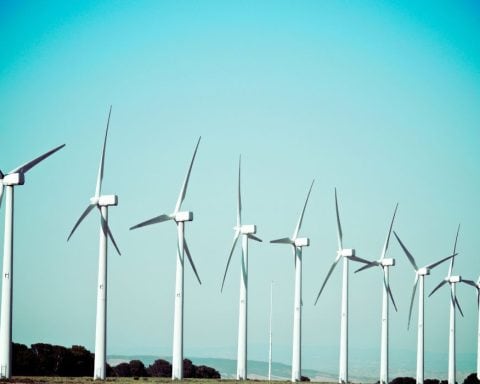Nuclear power has become a low-carbon energy choice for some countries looking to lessen their reliance on fossil fuels. France is looking to build on its already massive nuclear program; the U.K. is investing in small modular nuclear reactor technology; and even Japan, which shut down its 54 nuclear reactors after the 2011 disaster in Fukushima, has turned nine of them back on.
Proponents of nuclear power argue that we will need it to meet our greenhouse gas emissions targets. But to paraphrase Australian feminist and activist Irina Dunn, the world needs nuclear energy to address climate change like a fish needs a bicycle.
It’s a bad fit given our need to dramatically and quickly reduce our greenhouse gas pollution at the lowest possible cost.
Nuclear is no bargain, as the skewed ratio of nuclear shutdowns to start-ups worldwide amply proves. Of 13 nuclear reactors scheduled to come online in 2020, only three actually did. The others were all delayed. In the U.S., we see a growing lineup of nuclear operators looking for bailouts, while in Ontario, only the willingness of our governments to absorb huge cost overruns has kept nuclear afloat.
Nuclear energy’s heavy costs and long timelines matter because we all know we’re at the 11th hour on climate action. If we don’t drastically reduce emissions now, we stand no chance of keeping warming to even an uncomfortable 1.5°C. So what’s Ontario’s plan? Increase gas plant use by 500% or more by 2040 while new and rebuilt reactor projects are underway. This may be just about the most backward approach we could take at a time when Ontario is nowhere near meeting even the Ford government’s unambitious climate targets.
Ontario Power Generation (OPG) recently announced it’s teaming up with U.S.-based GE Hitachi to develop a $3-billion reactor that will not be particularly small (300 megawatts) or in any way modular (this remains a completely custom product). The result is that the projected cost, according to the Canadian nuclear industry itself, of power from this reactor will be an astronomical 16.3 cents per kilowatt-hour (kWh) – at a time when the global average cost of new solar and wind energy is hovering between 3 and 7 cents per kWh. And the currently unapproved reactor likely won’t be operational until 2030 at the earliest.
Currently, OPG charges 9.6 cents for power from its reactors. That’s after Ontario ratepayers and taxpayers spent years paying off the enormous debt racked up by our nuclear projects, which essentially bankrupted the old Ontario Hydro. This is roughly double what Alberta is now paying for solar energy, and almost double what Quebec has offered to charge Ontario for power from its vast waterpower system. And OPG acknowledges that its price for nuclear power will have to rise to 13.7 cents per kWh to pay for the rebuilding of reactors at the Darlington Nuclear Generating Station, east of Toronto. In 1975, Ontario Hydro estimated the cost of building the Darlington station would be $3.2 billion. The actual cost was $14.3 billion.
Nuclear is no bargain, as the skewed ratio of nuclear shutdowns to start-ups worldwide amply proves.
The nuclear industry’s answer to its long and troubled history of massive cost overruns, premature shutdowns and accidents is to promote a new type of “friendlier” nuclear – small modular reactors (SMRs). But to date they’re all in the development or research stage.
This fall, the U.K. government announced at the UN climate summit in Glasgow that it was handing luxury car manufacturer Rolls-Royce more than £200 million to develop its SMR technology. Given the massively over-budget and years-late Hinkley Point conventional nuclear project, it’s clear why the British government is eager to change horses. But with offshore wind power now costing Brits half of what power from Hinkley will cost, it’s not surprising that there is no big rush by the EU to follow in Britain’s footsteps when it comes to its investments in SMRs.
Nuclear has already shrunk from 26% to 17% of the European Union’s power supply since 2015. Germany continues to work its way toward a full nuclear phase-out and is integrating ever-higher levels of renewable energy into its grid. Germany, like all countries that have used nuclear power for decades, will have to find a home for millions of tonnes of radioactive waste, but at least they won’t continue to produce it as the British and Canadians seem determined to do.
Ontario’s dedication to nuclear power is unnecessary. Quebec keeps offering to supply its neighbour with power at a third of the cost of juice from OPG’s dream reactor. Ontario has enough transmission capacity right now to triple its electricity imports from Quebec and could also dramatically increase its interprovincial transmission capacity, using Hydro One’s existing transmission corridors, at a very small fraction of OPG’s budget for its various nuclear projects.
In addition, Hydro-Québec’s hydroelectric reservoirs can act like a giant battery for our wind and solar energy. By integrating our wind and solar energy with Hydro-Québec’s reservoirs, we can convert our intermittent renewable power into a firm 24/7 source of baseload electricity supply for Ontario. The previous Liberal government made two smallish deals with Quebec to purchase their surplus water power and storage. In 2020, Ontario’s net electricity imports from Quebec amounted to just 3% of our total.
But that’s just one way to store intermittent renewable power. We are seeing rapid advances in battery technology, and costs for battery storage are sliding down the same cost curve that solar and wind already have. We have the potential to use our electric vehicles’ (EV) batteries to store surplus wind and solar energy and to provide this power back to our electricity grid during peak demand hours to help phase out our gas and nuclear plants. After all, our cars sit idle for 95% of the hours of the day and we don’t want our EVs to be an underused resource in the battle against climate change.
With the cost of renewables continuing to drop, we can get far more climate bang for our buck by investing in energy efficiency, wind and solar energy, two-way chargers for our EVs, and by expanding our east–west electricity grid – rather than sticking with high-cost nuclear and polluting gas plants. The last thing we need now are costly and delaying distractions from real action on climate.
Angela Bischoff is the director of Ontario Clean Air Alliance.





